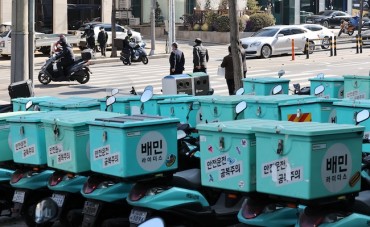
With the growing number of single person households, the number of meal kit products for single person households has increased dramatically. (Yonhap)
SEOUL, Sept. 12 (Korea Bizwire) – The proportion of one-person households in South Korea is projected to surpass 40 percent in 2052 amid a delay in marriages and rapid aging, the statistics agency said Thursday.
The number of households consisting of one member is forecast to reach 9.62 million in 2052, taking up 41.3 percent of the total households, according to the latest estimate by Statistics Korea.
The figure represents a hike from 7.39 million households in 2020, which took up 34.1 percent of the total.
People in their 20s took up the largest share of 18.7 percent of the total one-person households in 2022, followed by 17.2 percent in their 30s and 16.6 percent in their 60s.
In 2052, however, one-person households of people aged 80 and older are expected to account for the largest portion with 23.8 percent.
The households with a couple and their children accounted for 27.3 percent of the total in 2022, but the proportion is expected to fall to 17.4 percent in 2052 amid low childbirths.
The country has seen a constant rise in one-person households as more young people delay or give up on getting married or having babies due to the protracted economic slowdown, high housing prices and changing social norms about marriage.
Rapid aging amid a longer life span has also led to the growth in the number of single-person households.
The number of total households in South Korea is projected to peak in 2041 with 24.37 million before falling constantly to reach an estimate 23.28 million in 2052.
The figure in 2022 came to 21.66 million.
The average number of members per household is expected to decline from 2.26 in 2022 to 1.81 in 2052.
South Korea’s total population fell for the first time in 2021 and has been on a downtrend, but the number of households will likely start to decline more than 20 years later as the number of households consisting of one member and unmarried people is on the rise, the agency noted.
South Korea is widely expected to become a super-aged society in 2025, in which the proportion of those aged 65 and older hits 20 percent of the total population.
The country became an aged society in 2017, as the proportion of such people exceeded 14 percent.
The fertility rate, the average number of children a woman bears in her lifetime, also came to a fresh low of 0.72 in 2023, down from 0.78 the previous year.
It was much lower than the replacement level of 2.1 that would keep South Korea’s population stable at 51 million. The figure, which came to 4.53 in 1970, fell below 1 for the first time in 2018.
(Yonhap)







